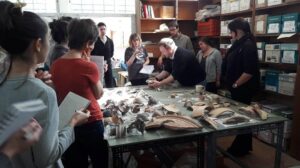Soil ecosystem services, water quality and greenhouse gas emissions, sustainable agriculture, soil management, soil chemistry, nutrient cycling, carbon capture and soil scares in the media with Associate Professor Paul Murphy, School of Agriculture and Food Science
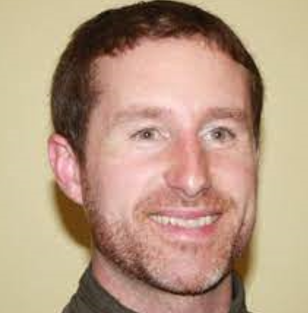
Associate Professor Paul Murphy
UCD School of Agriculture and Food Science
Q: You’re a soil scientist – can you tell us a bit about your academic background and how you came to this field?
A: I’m probably fairly typical for a soil scientist in that I didn’t do a degree in the subject itself. In Ireland there’s no undergraduate degree in soil science, unlike some other countries. I did science as my undergrad in Trinity and I specialised in geology. I always knew I was interested in environment and sustainability and I got the opportunity to do a two-year taught master’s at the University of Tuebingen in Germany, in Angewandte Umweltgeowissenschaft or Applied Environmental Geoscience, funded by the EU. It was an amazing opportunity and it was there that I really got into soils and soil science. I did my research project there on phosphorus and soils, which is something I still work on today.

Q: You did your PhD at Queens in Belfast – was that within Earth Sciences?
A: Yes, it was soil environmental chemistry, focusing on phosphorus, soil chemistry, pH and liming of soils, phosphorus solubility and the risk of phosphorus loss to water. I also did part of my PhD at the University of Delaware in the US, which has also a very strong soil and plant program, in particular focused around the management of phosphorus and protection of water quality. That’s a very big issue there with the Chesapeake Bay and its issues with water quality.
I was in two hot spots of water quality for my PhD –Lough Neagh in the North, which is in the news now all the time – that shows you how old this problem is! – and the Chesapeake Bay in Eastern US, which is not a freshwater body but marine water- very shallow- with a low exchange with the open ocean and a very agricultural watershed/catchment. Both have similar problems – accumulation of phosphorus driving eutrophication. Eutrophication is the enrichment of a water body with nutrients (mainly nitrogen and phosphorus) that can negatively impact the ecology and, in extreme cases, lead to things like algae blooms, toxin release, hypoxia (lack of oxygen in the water), fish kills, and dead zones.
Phosphorus is naturally occurring in soil. It’s one of the essential plant macronutrients that plants need and need in large quantities. However, it is typically very scarce, so in most natural soils phosphorus is limiting. That means it’s holding back biological productivity. It’s holding back the growth of plants, whether they’re the natural plants in natural ecosystems, or the plants that we manage in our agricultural ecosystems. Phosphorus will generally be limiting because of its scarcity in soil, or because of its low plant-availability in soil.
Phosphorus tends to form very strong and stable solids in soil and be very low in concentration in the water of the soil, meaning that plants can’t take it up, because plants take up almost all their nutrients through the water in the soil. For that reason, when you supply it as a phosphorus fertiliser, you generally get a response in plant growth. After nitrogen, phosphorus is the most important fertiliser nutrient and was the first to be sold by the fertiliser industry, historically.
When you have excess nitrogen and phosphorus going into waterways this drives eutrophication and the kind of algae blooms that you’ve seen in Lough Neagh and is also affecting rivers and lakes and estuaries in other parts of the country. Phosphorus is the main limiting nutrient in fresh waters, and nitrogen, typically in estuaries and coastal waters. However, nitrogen and phosphorus from agriculture is not the only source of nitrogen and phosphorus coming into water courses. It’s also coming from wastewater treatment plants and from a variety of other sources. But in Ireland in particular, given the makeup of our economy and land use, agriculture plays a large role in this.

“I like to say that soil is the living skin of the Earth. It’s not actually alive, to be clear, but it’s full of life. Most importantly, it underpins all terrestrial biological productivity. All the higher plants are rooted in soil and are taking their water and nutrients from the soil, and they are the primary producers that underpin the whole terrestrial ecosystem”.
: What draws you to study soil, and why is it such an important focus point? Why are healthy soils so important?
A: I like to say that soil is the living skin of the Earth. It’s not actually alive, to be clear, but it’s full of life. Most importantly, it underpins all terrestrial biological productivity. All the higher plants are rooted in soil and are taking their water and nutrients from the soil, and they are the primary producers that underpin the whole terrestrial ecosystem – including the managed ecosystem, the agri-ecosystems that we “manage”- I use inverted comma because, when you really think about it, these are systems that we disturb to push in certain directions in terms of crops and the yields of those crops.
I prefer to think of humans in terms of the concept of natural disturbance and disturbance regimes. Humans have become a major disturber of ecosystems in order to change those ecosystems, to move them in a certain direction for our advantage. That started before agriculture – hunter gatherer societies often quite radically altered the ecosystems around them to promote the growth of plants that they’re interested in, or to promote grazing. Native Americans, for example, would have used fire on a very widespread basis to create good grazing ground for buffalo. It’s not agriculture, but it’s still a big alteration to the ecosystem- “management”, essentially.
This idea is part of the whole concept of the Anthropocene- the idea that we’re now in the geological epoch where humans have become a primary driver of ecosystem disturbance. From that we get changes in a lot of the major global cycles, those earth surface processes that are really fundamental to the functioning of the whole earth surface system. These include the water cycle or the hydrological cycle, the carbon cycle, the nitrogen cycle, the phosphorus cycle. Soils are the space and time where you have the overlapping of all the different components of the earth surface system – the lithosphere (the rocks and sediments), the atmosphere (the gas phase), the biosphere (the living part) and the hydrosphere (the water).
Soil is the place in space and time where those other spheres overlap. It regulates fluxes of mass and energy between all those other spheres. What we do in managing our soils- for example if we decide to plough a soil or not, how deep to plough, if we decide to apply fertilisers to alter the biological productivity, to make nutrients more available to plants, to increase plant productivity of the crops we want to grow- all of this has impacts. What we have increasingly come to understand is that in doing these things, we alter the fluxes with the other components, to the hydrosphere for example, which has an impact on our water quality, or to the atmosphere which impacts on climate change.

Q: How do nutrients like nitrogen and phosphorus impact earth systems?
A: Nitrogen and phosphorus are the two key nutrients in terms of protecting our water quality and reducing greenhouse gas emissions to the atmosphere, which is driving climate change. My particular focus, in terms of mitigating climate change, is on nitrous oxide emissions. People don’t think of nitrous oxide so much when they think about climate change. They probably think about carbon dioxide or methane from cattle. But nitrous oxide is the third most important anthropogenic greenhouse gas and is closely associated with our management of nitrogen in fertilisers.
Nitrous oxide is a very strong greenhouse gas, much stronger than carbon dioxide or methane. It’s also long-lasting, which is another problem with it. Unlike methane, which breaks down quite quickly in the atmosphere, nitrous oxide doesn’t. It has a strong trapping effect on outgoing infrared radiation from the earth. So, it has a strong warming effect, and it will last a long time in the atmosphere. Nitrous oxide is a big issue for Ireland in terms of our greenhouse gas emissions from agriculture and soils, it counts for about a third of our emissions within agriculture, which itself is over one-third of our overall national emissions. I think it’s something to focus on because I would argue that there’s plenty of scope to reduce these nitrous oxide emissions and improve our nitrogen management.
“Nitrous oxide is a very strong greenhouse gas, much stronger than carbon dioxide or methane. It’s also long-lasting, which is another problem with it. Unlike methane, which breaks down quite quickly in the atmosphere, nitrous oxide doesn’t.”
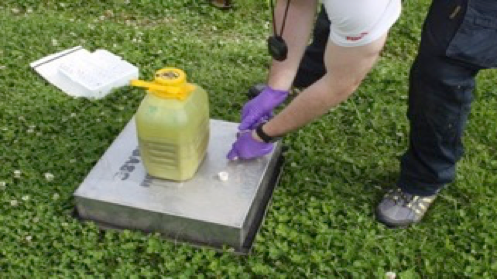
Q: Can I ask you about soil scare statistics – it’s often reported in the media that there is a global soil crisis. How accurate do you think this kind of reporting is?
A: So yes in some regions of the world, there are really critical, ongoing, not just threats, but actual loss of soil, soil fertility and soil function. For instance, in parts of Argentina, where natural grassland systems there are ploughed up to grow soy, or the loess plateau in central China, or parts of the Sahel in Sub Saharan Africa, because of poor agricultural practices, soil erosion can be very significant whether by wind or by water. Also, tropical forests that have been cleared for conversion to agriculture and in the years that follow in those systems, there can be very significant soil erosion and loss of soil fertility. Soil fertility, in many cases, collapses after a period of time.
But the circumstances of those soils are very different to the soils that we are lucky enough to have in Ireland, both from a climate and a soil perspective. In Ireland and in Northern Europe in general, for example, the nature of our soils and climate and vegetation means that such drastic and widespread soil erosion and loss of soil fertility is generally not the case. So, yes, I would say that some of the soil scare stories reported in the media are exactly that- scare stories! For example, the recent notion of “Hundred Harvests” that was widely reported and commented on.
That’s a catchy phrase! But there is, as far as I know, no reasonable grounds for assuming that we have only 100 harvests left in our soils (this was the basic premise). We have to be very careful of these “sticky” stories, when they are not true! However, there are real sustainability issues associated with, for example, overuse of fertiliser nitrogen or compaction of soil from heavier machinery. The impact of that can be hidden, to a certain extent, as it can be very widespread, but soil degradation in Ireland and Northern Europe in general, is a real issue.
The soil ecosystem services- such as food production, soil carbon capture and climate regulation, water regulation, provisioning of clean water – these can, and are, being degraded by poor soil management practices, including in Ireland and Northern Europe in general. So, for a variety of reasons you could argue that extensive areas of soils around the world in different regions, and to different extents, are being managed unsustainably. I think you could reasonably say that that’s a global soil crisis.
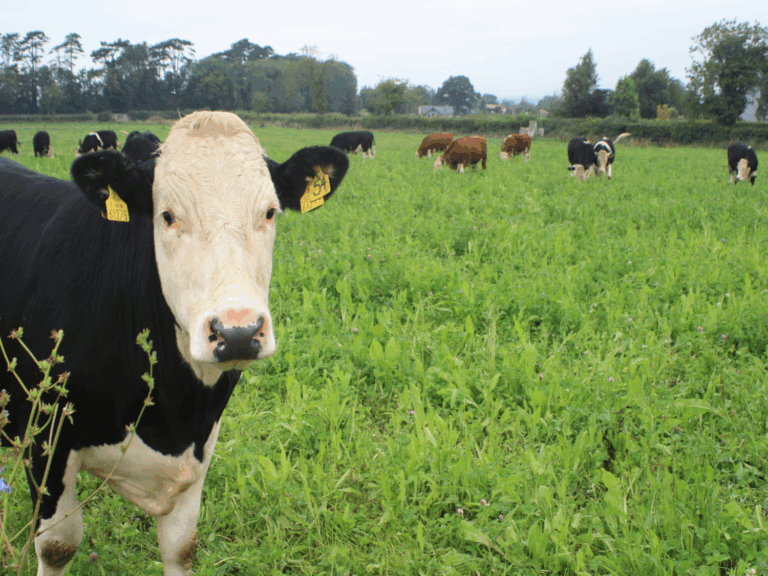
Q: You work a lot on issues related to farming. What kind of changes are being recommended to farmers in terms of production systems?
A: I was always interested in the applied side. I always felt if you’re going to have any positive impact in terms of sustainability, you need to be working on the solutions rather than the problems. There’s plenty of people studying the problems. To effect positive change, you have to be close to the producers – to the coalface. You need to know how nitrogen is managed on farms. Then it comes back to land management, improved management, changed management- best management practices. There’s a whole range of possibilities and one of the big questions is simply, what’s practical? What can actually be implemented on-farm?
To mention just a few that are either being implemented or being worked on in terms of research – one which I am particularly interested in is the whole area of nitrogen fertiliser management. Things like timing – when to apply nitrogen – how much, what form of nitrogen – all those things will affect the fate of that nitrogen. Is it mainly taken up into the growing crop, into the grazing animal where you want it, leading to improved productivity, or is it being lost to the wider environment, affecting water quality and greenhouse gas emissions? Of course, you want to find practices that would optimise that, to reduce the losses and improve the management.
I have a PhD student at the moment working on the composition of nitrogen in the fertiliser. Whether it is in the form of nitrate or ammonium and whether that would influence the fate of the nitrogen in terms of nitrous oxide emissions. She’s also looking at different compositions of fertiliser applied at different times of the year to grasslands to see if you can reduce N2O missions.
“To effect positive change, you have to be close to the producers – to the coalface. You need to know how nitrogen is managed on farms. Then it comes back to land management, improved management, changed management- best management practices. There’s a whole range of possibilities and one of the big questions is simply, what’s practical?”
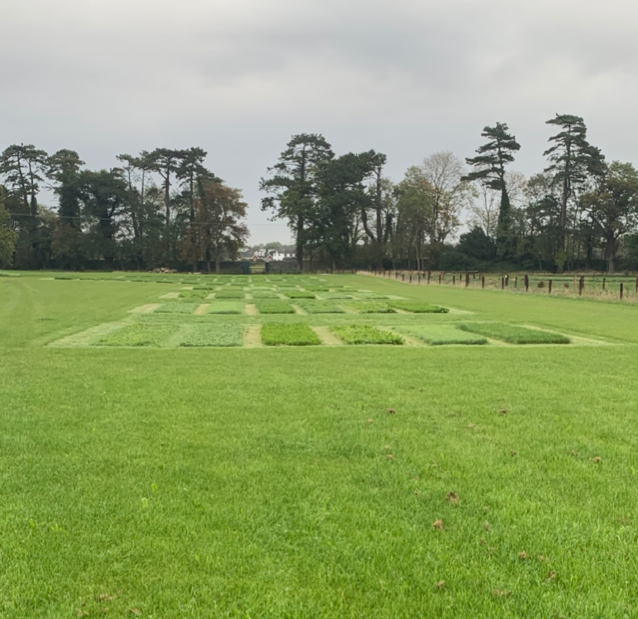
Previous work has looked at switching to urea and protected urea: Protected urea has a chemical coating on it that slows down the release and cycling of nitrogen, so that it has longer to be taken up by the plant and is less vulnerable to being leached to water as nitrate or emitted to the atmosphere as nitrous oxide. That’s an example of research which quite quickly actually moved into implementation in terms of policy, because it was incorporated into the emission factors for Ireland’s greenhouse gas emission inventory. This is the reason why protected urea is now being strongly encouraged, as opposed to unprotected urea or other forms of nitrogen fertiliser.
Much of my own work has focused on water quality and protecting water quality, often using spatial information and geographic information systems. I worked with one of my PhD students, Ian Thomas, using LiDAR, which is light detection and ranging, to create high resolution digital elevation models of the earth’s surface. Topography is related very much to soil properties and also to the movement of water in the landscape. This built on my postdoc work at the University of New Brunswick in CanadA: I returned to that here in Ireland to work with Teagasc on the Agricultural Catchments Programme. We modelled and mapped the landscape for critical source areas for phosphorus losses.
We know that very small areas of landscape actually deliver a large amount of the phosphorus into the receiving water bodies. The idea is, if you can locate those, you could maybe target measures at those points, those critical source areas, or critical transfer points into the stream network, to prevent phosphorus loss, and keep the phosphorus where you want it, in the soil, in the landscape, and not in the streams and rivers. That was a quite successful piece of work, which now is also being used in various programmes to do exactly that – to try to better target mitigation measures to protect water quality.
The final thing to say on recommended changes would be the multi species sward. It is a big theme in UCD and in our section in the School of Agriculture and Food Science in particular, and is key focus of my current work. My colleague Helen Sheridan has really been the driver of that whole concept and its development, I would say. I’ve been working with Helen for a number of years on the soil side of the equation. It is an area with huge potential. It is already getting into policy and being incorporated into our environmental schemes.

“A multi species sward is a grass field where you have mixtures of grasses and legumes and herbs. The key thing is that the legume component of the mix – typically clover – is fixing nitrogen. That’s biological nitrogen fixation. That’s nitrogen for free!”
Q: Can you tell us briefly what a multi species sward is and what kinds of experiments have been going on at UCD to look at them?
A: A multi species sward is a grass field where you have mixtures of grasses and legumes and herbs. The key thing is that the legume component of the mix – typically clover – is fixing nitrogen. That’s biological nitrogen fixation. That’s nitrogen for free! And that fixation is being carried out by bacteria in nodules on the roots of the legumes. It’s a symbiotic relationship between the legume plant and the bacteriA:
Most nitrogen on Earth is in the atmosphere as N2 gas. N2 gas is a really stable molecule- it has really strong triple bonds, binding two nitrogen atoms. To break those bonds takes a huge amount of energy to get nitrogen fixed, which means to get nitrogen into a form so that it’s then usable by the plant. That requires huge amounts of energy. The nitrogen fixing bacteria can do it, and they get energy from the plant’s photosynthesis. It’s a hugely powerful relationship.
We have a long term animal grazing experiment that we’ve established on UCD Lyon’s farm at a fairly large scale – the Long-term Grazing Platform. We have three sward types within the grazing platform, each with four 2-ha blocks of land and a herd of cattle grazing those four blocks – one is a perennial ryegrass monoculture, the conventional system, one is a grass-clover mix, and one is our multi-species sward; a mix of six species (2 grasses, 2 legumes and 2 herbs). We are looking at the performance of the whole system for each of these sward types as a farmlet- the growth of the herbage of that sward, the performance of the animals grazing it, and from my point of view in particular, the soil fertility and health, the nutrient losses to water and the soil greenhouse gas (N2O) emissions.
There are many potential benefits to multi species swards. One of the key ones is the reduction in fertiliser nitrogen use. In this experiment, we have found that the multi-species sward was able to consistently out yield the perennial ryegrass monoculture but at 60% less fertilizer- that’s a very large reduction! The way these things are calculated in terms of greenhouse gas emissions, for example, would be that for every ton of fertiliser nitrogen you apply, the default assumption would be that 1% of that is emitted as nitrous oxide- a greenhouse gas. So for every ton less of fertiliser N you use, or we use collectively in the country, we’re reducing our greenhouse gas emissions proportionately.
“Soil carbon sequestration is the removal of CO2 from the atmosphere through plant photosynthesis and the sequestering- or storing- of that carbon in the soil through the input of plant material to the soil, both as leaf and stem material aboveground and through the growth and death of roots belowground (we call this rhizodeposition).”

Q: You’re also interested in carbon storage in soil, can you tell us a bit about that?
A: One of the things we would hypothesise with these more diverse multispecies swards that we are researching is that, with their different rooting structures- including some of the herb species that are deep rooting- and their enhanced growth rates this could enhance soil carbon sequestration. Soil carbon sequestration is the removal of CO2 from the atmosphere through plant photosynthesis and the sequestering- or storing- of that carbon in the soil through the input of plant material to the soil, both as leaf and stem material aboveground and through the growth and death of roots belowground (we call this rhizodeposition).
This can act as an effective climate change mitigation option through removing carbon from the atmosphere and storing it in soil. In general, the understanding would be that the deeper down the soil profile you can incorporate carbon into the soil, the more likely it is to be stable and secure in the longer term. To look into this we have done deep soil coring down to a metre or so using a Giddings soil corer- a large soil coring machine that goes on the back of a tractor and allows you to take intact soil cores down to over a metre depth. Soil studies are generally focused at the surface soil, for obvious reasons. But with soil carbon sequestration, it’s important to go down deep.
The Giddings corer takes an intact core from the whole soil profile. We have done this at multiple points across the three sward types in the Long-term Grazing Platform to see whether there are differences in soil C sequestration between the three sward types over the 5 years since the swards were established. We cut the cores open and we image them and section them and analyse for a range of things, including organic matter and carbon. We have recently secured more funding from the DATAMARS Sustainability Foundation and BIORBIC (Taighde Éireann Research Centre for Bioeconomy) to look at the carbon sequestration and soil health aspects, in particular.
Soil carbon sequestration is a long term process and we’ve had that experiment in there for a full five years. That is the point from the literature from when you might start to see a shift in soil carbon. One of the main challenges is, can you verifiably measure changes in soil carbon under specific management practices. There’s a very large store of carbon in soils typically- for example, there’s more carbon stored in soils than there is in the whole biomass above ground on Earth. It’s a big pool, which is part of the challenge of measuring changes in soil C- in any one year how can you measure what you do to change that balance?
“Soil moisture is critical. In addition to the nutrients we were just talking about, plants get their water from the soil. This is driven by the available water that they can access from the soil. Plant growth can be severely impacted by drought”
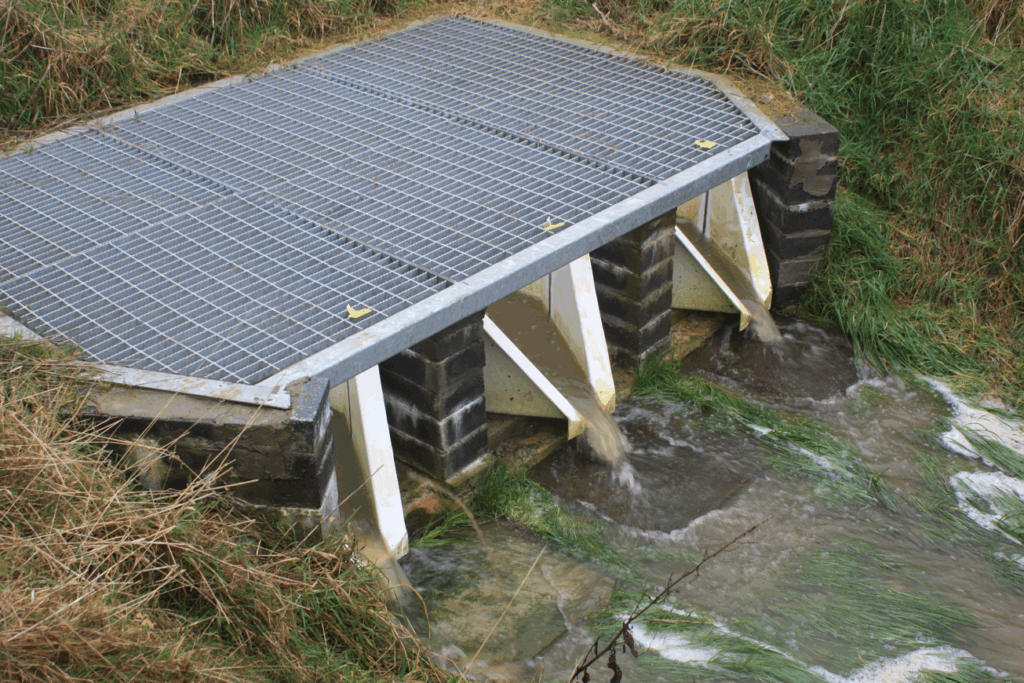
Q: Finally, you also work on soil moisture, in what ways is this important?
A: We talked about greenhouse gas emissions and minimising nitrous oxide emissions to the atmosphere, and soil carbon sequestration to remove CO2 from the atmosphere. These are both examples of mitigation- trying to mitigate the emissions that are causing climate change. The other aspect of our response to climate change has to be adaptation- how we adapt to the changing climate. I think people are increasingly aware that adaptation has not received enough attention to date, but it is now starting to move up the priorities.
Soil moisture is critical. In addition to the nutrients we were just talking about, plants get their water from the soil. This is driven by the available water that they can access from the soil. Plant growth can be severely impacted by drought- just look at the summer droughts in Ireland in recent years. While this is related to rainfall and evaporation and so on, the thing that really causes drought impact for a plant is, can it get enough water out of the soil? Soil properties are hugely important here. We might not be so ware of that in Ireland because we are lucky to have a temperate maritime climate, with rainfall fairly evenly distributed, relatively, throughout the year, and adequate rainfall through the year.
Most of our agriculture is what, in other parts of the world, would be called rain-fed agriculture. We would never use this term because we generally don’t have to worry about drought. However, in other, more arid, parts of the world there is often not enough plant-available water in soils and irrigation is needed- about 40% of global food production comes from irrigated land. Across large regions of the world plant-available soil water is the primary limiting factor for agriculture- no water, no food.
In Ireland, we more often face the opposite problem, given our high rainfall and that many our many of our soils are quite heavily textured. Heavily textured means quite rich in clay and not sandy, and therefore relatively poorly drained. We often have problems with water logging, where soils have become flooded and you can’t put animals out to graze. You can’t traffic them with a tractor. You can’t plough them. When you think about fodder crises that we have periodically in Ireland (when there’s not enough fodder to feed animals), it’s more often that they’re caused by wet, cold conditions. We do have- and have recently had more- summer drought conditions and climate change models predict that we will get more of these in future, particularly in the south and east of the country. So drought and low water availability may well be more of an issue for us, especially in the summer months, in the south and east in years to come.
One of the things we’re working on towards addressing some of that is ISMON – the Irish Soil Moisture Observation Network. It’s a pilot network of soil moisture observation and meteorological parameter observation around the country, with UCD, Met Éireann, Teagasc and other partners. There are quite a few people on board (I’m not driving it!) but the aim is to see if we can get a better handle on soil moisture conditions. With the existing Met Eireann network of stations we have quite a good handle on rainfall and air temperature, for example- all the standard meteorological parameters. But as I was saying, it’s moisture conditions in the soil that really determine whether it’s water stressed or not, or whether it’s saturated or not.

Q: How is soil moisture normally measured?
A: The usual way that it’s measured is using things called TDR probes, which stands for Time Domain Reflectometry. These are probes that go into the soil at different depths at the meteorological station and monitor soil moisture content. However, they only monitor soil moisture from a small area of soil immediately around the instrument, so it’s very proximal and a very small area of soil. But soil is very variable- one challenge we always face in soil science is spatial variability.
What we’re piloting in ISMON is something called a cosmic ray neutron sensor. This doesn’t directly measure the soil moisture, but it measures or counts secondary neutrons that are coming to the instrument from the soil around it. This secondary neutron count is closely related to the hydrogen (mostly in H2O- water) within the measurement footprint. It covers a much bigger area than the traditional TDR probes- a couple of 100 meters radius around the instrument. In principle, it will give a better indication of soil moisture conditions at a field scale, across the field, and a better reflection through the year whether the soils are drying or wetting- what condition they’re in. This is a pilot program to test those instruments and it may in the future become a more established network, if the pilot is successful.
The basic idea behind it is that that understanding of soil moisture conditions – where the soil is at in terms of its water content – is key for agriculture and for other land use decision making. When to plough? When to put animals out to graze? When to apply fertilizer? When to apply slurry? It’s also key for things like flooding and flood forecasting. The conditions in the soil before a big rain event are key to determining what happens to that rain. Does the water infiltrate and is it stored in the soil, or does it flow off the surface and quickly into the streams and rivers? With climate change and the need for adaptation to climate change in the future, it’s likely that knowing these things with much greater accuracy and in real time will be very important to improve all kinds of aspects of soil and land management.


